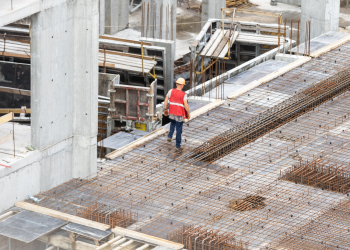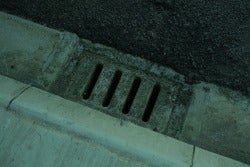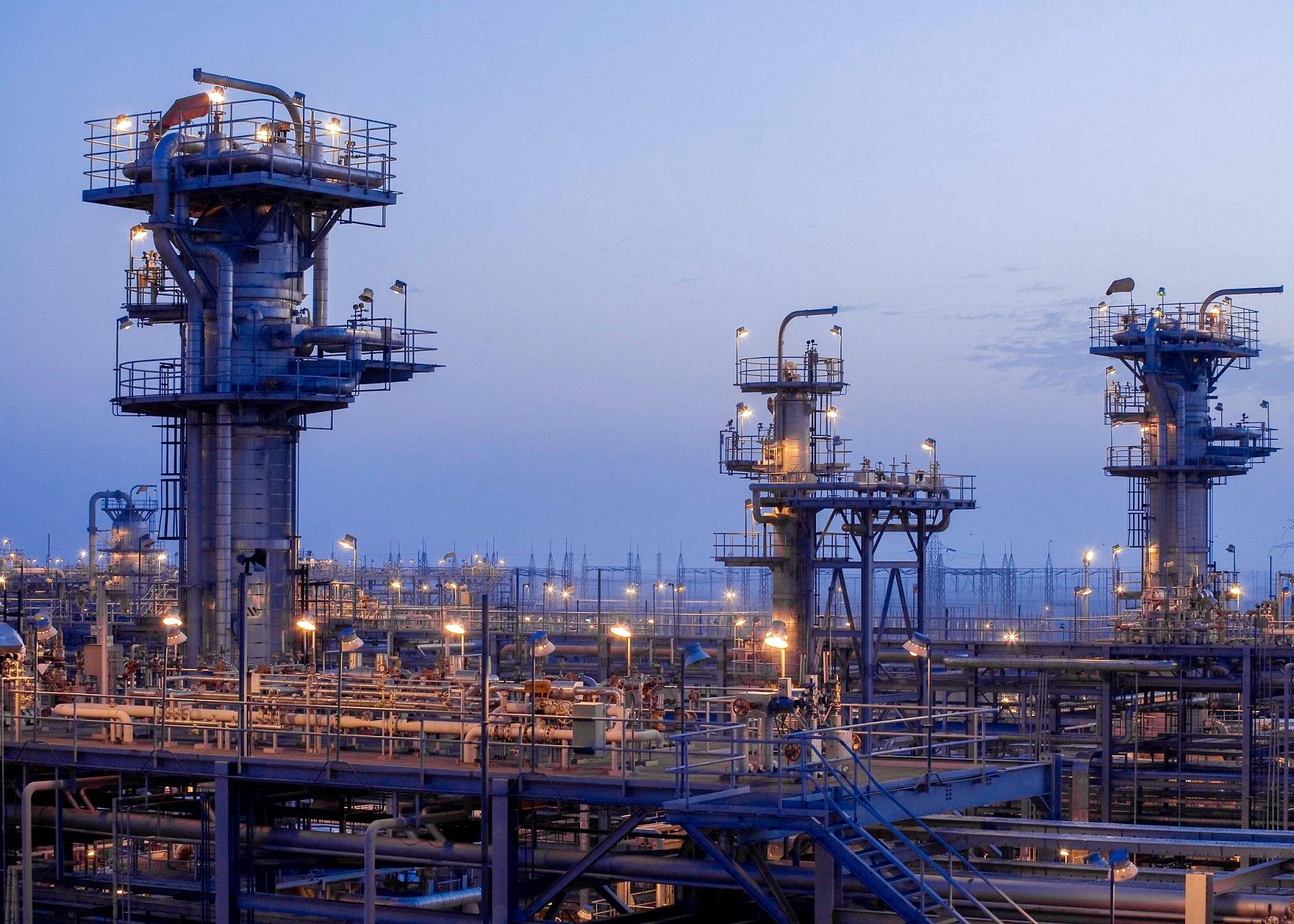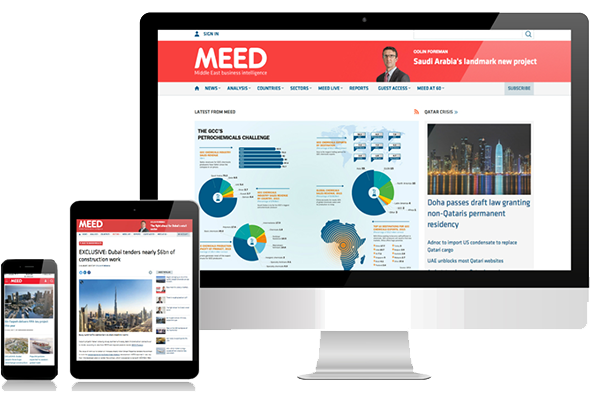Egypt’s economy gets its mojo back
14 February 2025

Egypt’s economy is in stronger fettle than for at least a couple of years, and there is a sense of optimism about how things will transpire in 2025, even as recent pronouncements from the White House about Gaza weigh on policymakers in Cairo.
In a manifestation of that upbeat economic sentiment, Egypt in January staged a return to the international debt capital market for the first time in two years, with a $2bn issuance that was five-times oversubscribed. That was a straw in the wind that foreign investors’ concerns over the economy are finally abating.
After a battering inflicted on Egypt’s economy last year, when economic growth slipped to 2.4%, reflective of a weak currency, surging inflation and tougher public spending restrictions, analysts see a recovery in play that will drive stronger GDP growth in the coming year.
One key contributor to this improvement is the recovery in Suez Canal receipts, which dropped by about three-quarters last year after the Houthi attacks on shipping in the Red Sea. That loss of $7bn in revenues shaved off more than a percentage point from Egypt’s overall GDP growth rate, noted Moody’s Investors Service.
Growth dynamics are now improving, even if events in the region remain in flux. According to Capital Economics, there was a rise in real GDP growth to 3.5% in Q3 2024, up from 2.4% in Q2 2024. The manufacturing, transport and storage, and finance sectors were the key drivers of that improvement.
Egyptian banks are feeling the positive impact. Credit growth is reviving, with bank lending to the non-government sector growing by 2.9% in October 2024 – the fastest pace in two years.
Operating conditions for Egyptian lenders will continue improve in 2025, according to Fitch Ratings, underpinned by a sharp fall in inflation, along with an expected broadly stable currency, improved investor confidence and healthy foreign currency liquidity conditions. This should also support lower interest rates as inflation declines.
Foreign capital injection
Douglas Winslow, senior director at Fitch Ratings, says the improvement in market sentiment follows a combination of factors and is also seen in the return of non-resident inflows totalling more than $10bn into the domestic debt market since early last year.
 Egypt's external finances have benefitted from Gulf state interventions, notably the UAE sovereign wealth fund ADQ’s major foreign investment in the Mediterranean resort of Ras El-Hekma, which was announced in 2024.
Egypt's external finances have benefitted from Gulf state interventions, notably the UAE sovereign wealth fund ADQ’s major foreign investment in the Mediterranean resort of Ras El-Hekma, which was announced in 2024.
That deal injected $24bn of new foreign currency into Egypt, the remaining $11bn converting existing UAE foreign currency deposits held at the Central Bank of Egypt (CBE).
Saudi Arabia’s Public Investment Fund has also committed to invest $5bn in Egypt’s economy.
Such investments, eased by the weaker Egyptian pound – rendering assets more affordable – will also help to address Egypt’s dollar shortages, and assuage residual investor concerns about default risk.
“The huge Ras El-Hekma investment was a very important factor in the turnaround, and Fitch projects further foreign direct investment (FDI) of $7bn a year above the pre-ADQ position. The lion’s share of that is GCC investment,” says Winslow.
The $24bn of fresh foreign currency puts Egypt in a better place to move to a more flexible exchange rate.
The combination of these factors has enabled a rapid rebuilding of Egypt’s external coffers, which was the key risk facing near-term external financing. Fitch forecasts FDI to average $16.5bn across the fiscal year ending June 2025 and fiscal year 2026, with new investment from Saudi Arabia having an impact.
Alongside the Gulf support has come multilateral financing, including from Europe. Since March 2024, an $8bn IMF Extended Fund Facility and a €7.4bn ($7.64bn) three-year EU support package have been unlocked.
Together, these capital injections will also help cover Egypt’s current account deficit, which widened to 5.4% of GDP in 2024. Inflation is also headed in the right direction, after reaching a peak of 36% in February 2024. The expectation is that inflation will have more than halved by the end of financial year 2025-26.
Strong growth upside
Looking ahead, the more optimistic prognosis foresees GDP growth accelerating to 5% in the current fiscal year. Others are more circumspect, noting the recent recovery in Suez Canal receipts is very partial and that the government still needs to implement structural economic reform measures.
Fitch Rating’s forecast for GDP growth is 4% for fiscal year 2025. A pickup in growth is already detectable.
“Growth was 3.5% in Q1 of the current fiscal year and we expect it accelerates to just above 5% in fiscal year 2026, close to our assessment of the potential and rate of the Egyptian economy. That’s partly due to further falling inflation and a positive impact on real income,” says Winslow.
Despite these stronger macro metrics, the wider credit assessment is still constrained, due to relatively weak external finances. While the central bank can call upon larger foreign exchange reserves to support the currency, Capital Economics has warned that a return to a heavily managed exchange rate would worry investors and may also call into question IMF and Gulf willingness to provide further financing.
“The IMF programme does contain some wider structural reform measures to improve private sector competitiveness, but in our view, they're not particularly far-reaching, and we're not seeing really sizeable momentum in terms of delivering in this area,” Winslow says.
There is a need for measures to stimulate private sector growth and also to improve the competitiveness of the economy, support the trade balance and reduce the current deficit over the medium term.
“A better track record of ongoing political commitment to curbing off-budget spending pressures would also help Egypt’s rating,” says Winslow.
As to the potential for regional events to upset things, Egypt's credit fundamentals are at least better insulated from further geopolitical stress.
This, in turn, should give comfort to commercial banks in Egypt. Fitch upgraded the long-term issuer default ratings of all rated banks in November 2024, following the upgrade of Egypt’s sovereign rating.
There are other things that will need to be seen for the Egyptian economy’s recovery to sustain itself over the long-term.
“From a credit perspective, the composition of growth is equally important,” says Winslow.
“What we’ve seen in the past is that very large government off-budget megaprojects have not just led to weaker public finances, they've also contributed to external financing stress. So, what's particularly important is that the recent steps to try and better monitor and contain these off-budget infrastructure projects continues.”
MEED’s March special report on Egypt also includes:
> GOVERNMENT: Egypt is in the eye of Trump’s Gaza storm
> POWER & WATER: Egypt’s utility projects keep pace
> CONSTRUCTION: Coastal city scheme is a boon to Egypt construction
 READ THE FEBRUARY MEED BUSINESS REVIEW
READ THE FEBRUARY MEED BUSINESS REVIEW
Trump unleashes tech opportunities; Doha achieves diplomatic prowess and economic resilience; GCC water developers eye uptick in award activity in 2025.
Published on 1 February 2025 and distributed to senior decision-makers in the region and around the world, the February MEED Business Review includes:
|
> AGENDA 1: Trump 2.0 targets technology
> AGENDA 2: Trump’s new trial in the Middle East
> AGENDA 3: Unlocking AI’s carbon conundrum
> GAZA: Gaza ceasefire goes into effect
> LEBANON: New Lebanese PM raises political hopes
> WATER DEVELOPERS: Acwa Power improves lead as IWP contract awards slow
> WATER & WASTEWATER: Water projects require innovation
> INTERVIEW: Omran’s tourism strategies help deliver Oman 2040
> PROJECTS RECORD: 2024 breaks all project records
> REAL ESTATE: Ras Al-Khaimah’s robust real estate boom continues
> QATAR: Doha works to reclaim spotlight
> GULF PROJECTS INDEX: Gulf projects market enters 2025 in state of growth
> CONTRACT AWARDS: Monthly haul cements record-breaking total for 2024
> ECONOMIC DATA: Data drives regional projects
> OPINION: Between the extremes as spring approaches
|
Exclusive from Meed
-
 Contract award nears for Saudi Defence Ministry headquarters
Contract award nears for Saudi Defence Ministry headquarters10 December 2025
-
 Firms prepare Riyadh government office PPP bids
Firms prepare Riyadh government office PPP bids10 December 2025
-
 Municipality seeks consultants for Dubailand drainage project
Municipality seeks consultants for Dubailand drainage project10 December 2025
-
 Riyadh prepares Qiddiya National Athletics Stadium tender
Riyadh prepares Qiddiya National Athletics Stadium tender9 December 2025
-
 Contractors submit prices to Adnoc Gas for Ruwais NGL project
Contractors submit prices to Adnoc Gas for Ruwais NGL project9 December 2025
All of this is only 1% of what MEED.com has to offer
Subscribe now and unlock all the 153,671 articles on MEED.com
- All the latest news, data, and market intelligence across MENA at your fingerprints
- First-hand updates and inside information on projects, clients and competitors that matter to you
- 20 years' archive of information, data, and news for you to access at your convenience
- Strategize to succeed and minimise risks with timely analysis of current and future market trends

Related Articles
-
 Contract award nears for Saudi Defence Ministry headquarters
Contract award nears for Saudi Defence Ministry headquarters10 December 2025

Saudi Arabia’s Defence Ministry (MoD) is preparing to award the contract to build a new headquarters building, as part of its P-563 programme in Riyadh.
MEED understands that bid evaluation has reached advanced stages and the contract award is imminent.
The MoD issued the tender in April. The commercial bids were submitted in September, as MEED reported.
Located to the northwest of Riyadh, the P-563 programme includes the development of facilities and infrastructure to support the MoD’s broader initiatives under the kingdom’s Vision 2030 strategy.
It covers the construction of:
- A new military city featuring the MoD headquarters, support and logistics facilities, a residential and commercial community and space for future command centres
- A National Defence University with a library, conference centre and academic buildings
- A self-sustaining Joint Forces Command compound located approximately 50 kilometres from the military city
The budget for the entire programme is expected to be $10bn-$12bn.
In September 2023, MEED reported that Spain-headquartered Typsa had won two contracts for the project.
The first contract, worth $11.4m, included data management, geographic information systems management, geotechnical reporting and the preparation of the phase one final traffic report. The contract duration was 270 days from the notice to proceed.
The second contract, valued at $10.8m, involved preparing four conceptual masterplans for the P-563 site. It was set to last 255 days from the notice to proceed.
These followed a $290m consultancy contract awarded to Typsa in March of the same year. The single-award task order covered a three-year base period, with an optional two-year extension.
Typsa’s scope of work included programme management planning, communications, change and quality management and cost and schedule tracking.
It also included design requirements, codes, standards and submission requirements, programme guidance, study integration, risk analysis and management, design reviews and a programme-of-work breakdown plan.
 READ THE DECEMBER 2025 MEED BUSINESS REVIEW – click here to view PDF
READ THE DECEMBER 2025 MEED BUSINESS REVIEW – click here to view PDFProspects widen as Middle East rail projects are delivered; India’s L&T storms up MEED’s EPC contractor ranking; Manama balances growth with fiscal challenges
Distributed to senior decision-makers in the region and around the world, the December 2025 edition of MEED Business Review includes:
> AGENDA 1: Regional rail construction surges ahead> INDUSTRY REPORT 1: Larsen & Toubro climbs EPC contractor ranking> INDUSTRY REPORT 2: Chinese firms expand oil and gas presence> CONSTRUCTION: Aramco Stadium races towards completion> RENEWABLES: UAE moves ahead with $6bn solar and storage project> INTERVIEW: Engie pivots towards renewables projects> BAHRAIN MARKET FOCUS: Manama pursues reform amid strainTo see previous issues of MEED Business Review, please click herehttps://image.digitalinsightresearch.in/uploads/NewsArticle/15222401/main.gif -
 Firms prepare Riyadh government office PPP bids
Firms prepare Riyadh government office PPP bids10 December 2025

Firms are preparing to submit bids for a contract covering the construction of the Riyadh administrative office for Defence Ministry (MoD) personnel.
The clients have asked firms to submit their bids by 26 March 2026.
The MoD is developing the project in collaboration with Saudi Arabia's National Centre for Privatisation & PPP (NCP).
The project will be implemented under a design, build, finance and maintain contract with a term of 27.5 years.
The administrative complex, located in the north of Riyadh, will cover about 52,793 square metres. It will accommodate 4,500 employees and provide 3,200 parking spaces.
In September, the NCP announced the prequalified bidders for the project. These include:
- Tamasuk / Alghanim International (local/Kuwait)
- Mota-Engil / Tatweer Buildings Company / Alternative Resources Investments (Portugal/local/UAE)
- Albawani / Areic (local/local)
- Bonyan Real Estate Investment / Artar (local/local)
- FCC / IHCC (Spain/local)
- Vision Invest (local)
- Own Real Estate (local)
- Alfanar (local)
- Lamar Holding (local)
- Alyamama (local)
- El-Seif Engineering Contracting (local)
- Al-Kifah Holding Company (local)
- Alargan (Kuwait)
- Asyad (Oman)
The NCP and MoD started the expression of interest and request for qualification process for the project in May, as MEED reported.
According to an official statement, "the selected private-sector partner will be responsible for the design, construction and long-term maintenance of the facilities and supporting infrastructure, as well as coordination with stakeholders and obtaining all necessary permits".
The value of public-private partnership (PPP) contracts in Saudi Arabia has risen sharply over the past few years as the government seeks to develop projects through the private sector and diversify funding sources.
PPPs have been used in Saudi Arabia and the wider GCC region for over two decades, but have been mainly limited to power generation and water desalination plants, where the developer benefits from guaranteed take-or-pay power-purchase agreements that eliminate demand risk.
However, in the past three years, the government has successfully implemented PPPs in several new sectors, including education and healthcare, to finance, build and operate schools and hospitals. Forthcoming PPP projects include the estimated $2.5bn Asir-Jizan highway, which would be the first road concession in the GCC; the multibillion-dollar contract to develop the expansion of Abha International airport; and the Qiddiya high-speed rail scheme.
Outside the utilities sector, the NCP has more than 170 PPPs in the pipeline, covering long-term concession agreements in projects as diverse as municipal laboratories, television and radio tower infrastructure, court complexes and logistics zones.
As capital expenditure continues to increase, the NCP is expected to add dozens more PPPs to its future pipeline to relieve the state’s financial burden and to stimulate the private sector’s involvement in the local projects market.
 READ THE DECEMBER 2025 MEED BUSINESS REVIEW – click here to view PDF
READ THE DECEMBER 2025 MEED BUSINESS REVIEW – click here to view PDFProspects widen as Middle East rail projects are delivered; India’s L&T storms up MEED’s EPC contractor ranking; Manama balances growth with fiscal challenges
Distributed to senior decision-makers in the region and around the world, the December 2025 edition of MEED Business Review includes:
> AGENDA 1: Regional rail construction surges ahead> INDUSTRY REPORT 1: Larsen & Toubro climbs EPC contractor ranking> INDUSTRY REPORT 2: Chinese firms expand oil and gas presence> CONSTRUCTION: Aramco Stadium races towards completion> RENEWABLES: UAE moves ahead with $6bn solar and storage project> INTERVIEW: Engie pivots towards renewables projects> BAHRAIN MARKET FOCUS: Manama pursues reform amid strainTo see previous issues of MEED Business Review, please click herehttps://image.digitalinsightresearch.in/uploads/NewsArticle/15222216/main.jpg -
 Municipality seeks consultants for Dubailand drainage project
Municipality seeks consultants for Dubailand drainage project10 December 2025
Register for MEED’s 14-day trial access
Dubai Municipality has invited consultants to prequalify for a contract to provide supervision services on a major drainage infrastructure project serving developed communities in Dubailand.
The sewerage and stormwater drainage project, listed under the code DS-204-S1, is being procured through the government’s Sewerage and Recycled Water Projects Department (SRPD).
The bid submission deadline is 8 January.
The consultancy contract follows the issuance in November of the related construction package, DS-204-C1, for which the municipality invited contractors to prequalify.
The scope includes sewage gravity pipelines with diameters of up to 2,200mm, a sewage lift station with a capacity of three cubic metres a second, and a 1,400mm-diameter sewage rising main that will take pumped sewage from the lift station to the main sewer network.
The bid submission deadline for the construction package is also 8 January 2026.
The tenders form part of Dubai’s wider investment in sewerage expansion, including the $8bn Tasreef programme, for which several projects have moved into the execution phase in recent months.
Once completed, the Tasreef system is expected to increase Dubai’s overall drainage capacity by about 700% and provide daily stormwater treatment capacity exceeding 20 million cubic metres.
 READ THE DECEMBER 2025 MEED BUSINESS REVIEW – click here to view PDF
READ THE DECEMBER 2025 MEED BUSINESS REVIEW – click here to view PDFProspects widen as Middle East rail projects are delivered; India’s L&T storms up MEED’s EPC contractor ranking; Manama balances growth with fiscal challenges
Distributed to senior decision-makers in the region and around the world, the December 2025 edition of MEED Business Review includes:
> AGENDA 1: Regional rail construction surges ahead> INDUSTRY REPORT 1: Larsen & Toubro climbs EPC contractor ranking> INDUSTRY REPORT 2: Chinese firms expand oil and gas presence> CONSTRUCTION: Aramco Stadium races towards completion> RENEWABLES: UAE moves ahead with $6bn solar and storage project> INTERVIEW: Engie pivots towards renewables projects> BAHRAIN MARKET FOCUS: Manama pursues reform amid strainTo see previous issues of MEED Business Review, please click herehttps://image.digitalinsightresearch.in/uploads/NewsArticle/15218750/main.jpg -
 Riyadh prepares Qiddiya National Athletics Stadium tender
Riyadh prepares Qiddiya National Athletics Stadium tender9 December 2025

Register for MEED’s 14-day trial access
Saudi gigaproject developer Qiddiya Investment Company (QIC) is expected to float a tender soon for the construction of the estimated SR7bn ($1.8bn) National Athletics Stadium at its Qiddiya entertainment city development.
MEED understands that the prequalification process has reached an advanced stage and the tender for the main contract is likely to be issued within a few weeks.
The multipurpose stadium will cover an area of approximately 182,000 square metres and its design is inspired by the London Olympic Stadium.
In September, MEED exclusively reported that QIC had begun the procurement process for the kingdom’s next major sporting destination, having received expressions of interest from contractors for the project.
UK-based HOK is the project’s lead design consultant. It is supported by Canadian engineering firm WSP and Germany’s Schlaich Bergermann Partner.
UK-headquartered WT Partnership is serving as the project’s cost consultant.
The stadium will be located within the Qiddiya Sports Park cluster and is expected to be completed by 2030.
In December 2020, Saudi Arabia was selected to host the 2034 Asian Games. The 22nd edition of the event will be held in Riyadh from 29 November to 14 December 2034.
Saudi Arabia is also set to host the Asian Winter Games in 2029. In October 2022, the Trojena development at Neom, in the northwest of the country, was selected to host the ninth edition of the event.
The National Athletics Stadium is one of several major projects within the wider Qiddiya development. Others include an e-games arena, Prince Mohammed Bin Salman Stadium, a performing arts centre, a motorsports track, Dragon Ball and Six Flags theme parks and Aquarabia waterpark.
The project is a key part of Riyadh’s strategy to boost leisure tourism in the kingdom. According to UK analytics firm GlobalData, leisure tourism in Saudi Arabia has experienced significant growth in recent years.
Domestic leisure tourism trips increased to 33.76 million in 2023, up from 16.74 million in 2018. International tourist arrivals for recreational purposes increased by 600% from 2018 to 2023.
Image: Buro Happold
https://image.digitalinsightresearch.in/uploads/NewsArticle/15217660/main.jpg -
 Contractors submit prices to Adnoc Gas for Ruwais NGL project
Contractors submit prices to Adnoc Gas for Ruwais NGL project9 December 2025

Register for MEED’s 14-day trial access
Contractors have submitted commercial proposals to Adnoc Gas for engineering, procurement and construction (EPC) work as part of a design‑update competition for a project to install a fifth natural gas liquids (NGL) fractionation train at its Ruwais gas processing facility in Abu Dhabi.
The fifth NGL fractionation train will have an output capacity of 22,000 tonnes a day (t/d), or about 8 million tonnes a year.
Adnoc Gas, the natural gas processing business of Abu Dhabi National Oil Company (Adnoc Group), has adopted the design-update competition model to deliver the Ruwais NGL Train 5 project, MEED previously reported.
The design-update competition model involves the project operator selecting contractors to execute front-end engineering design (feed) work on the project. The operator selects the contractor with the most competitive feed proposal to execute EPC works on the project, while also compensating the other contestants for their work.
According to sources, contractors participating in the design-update competition for the Ruwais NGL Train 5 project submitted commercial bids for EPC works by the deadline of 8 December.
The previous deadline for price submissions was 30 November, sources said.
Adnoc Gas previously asked contractors to submit their feed technical proposals for the project in September.
In January, MEED reported that Adnoc Gas had selected the following contractors to participate in the design-update competition for the Ruwais NGL Train 5 project:
- JGC Corporation (Japan)
- Technip Energies (France)
- Tecnimont (Italy)
MEED previously reported that participants had submitted technical proposals for feed work on 6 October.
The scope of work on the Ruwais NGL Train 5 project covers the EPC of the following units:
- NGL fractionation plant with a capacity of 22,000 t/d, including NGL fractionation facilities, downstream treatment units, sulphur recovery units, products storage, loading facilities and associated utilities, flares and interconnection pipelines with existing facilities
- Two propane liquefied petroleum gas storage tanks and one paraffinic naphtha storage tank
- Buildings – a central control building, outstations, substations and plant amenities
- Electrical power connections. Power is to be sourced from the nearby Transco substation via a direct underground cable to the plot location.
Adnoc Gas requires the feed on the project to be updated based on the design of Ruwais NGL Train 4, which has an output capacity of 27,000 t/d and was commissioned in 2014.
In December 2021, MEED reported that Adnoc Gas, then operating as Adnoc Gas Processing, had awarded Indian contractor Larsen & Toubro Hydrocarbon Engineering the main contract for a project to enhance the capacity of its NGL trains 1-4 at the Ruwais complex.
ALSO READ: Adnoc Gas capex budget to rise to $28bn by 2029
Adnoc Gas business
Adnoc Group announced the creation of Adnoc Gas through the merger of its subsidiaries Adnoc Gas Processing and Adnoc LNG in November 2022. Adnoc Gas began operating as a commercial entity on 1 January 2023.
The consolidation of Adnoc’s gas processing and liquefied natural gas (LNG) operations into Adnoc Gas has created one of the world’s largest gas-processing entities, with a processing capacity of about 10 billion standard cubic feet of gas a day across eight onshore and offshore sites, which include its Asab, Bab, Bu Hasa, Habshan and Ruwais plants.
The company also owns a 3,250-kilometre (km) gas pipeline network to supply feedstock to its customers in the UAE. This sales gas pipeline network is being expanded to over 3,500km through the estimated $3bn Estidama project.
The company will also acquire its parent Adnoc Group’s 60% share in the Ruwais LNG terminal project at cost in the second half of 2028. UK energy producer BP, Japan’s Mitsui & Co, UK-based Shell and French energy producer TotalEnergies are the other shareholders in the project, holding 10% stakes each.
Adnoc Gas share sale
In February 2025, Adnoc Group completed a marketed offering of approximately 3.1 billion shares in Adnoc Gas, raising $2.8bn from the exercise.
The offering consisted of 3,070,056,880 shares, representing 4% of the issued and outstanding share capital of Adnoc Gas.
Following the marketed offering of shares, Adnoc Group continues to hold the majority 86% of shares in Adnoc Gas.
The parent entity listed 5% of Adnoc Gas’ shares on the Abu Dhabi Securities Exchange in March 2023, in an initial public offering from which it raised about $2.5bn.
Abu Dhabi National Energy Company (Taqa) owns the remaining 5% shares in Adnoc Gas.
https://image.digitalinsightresearch.in/uploads/NewsArticle/15217598/main2533.jpg

